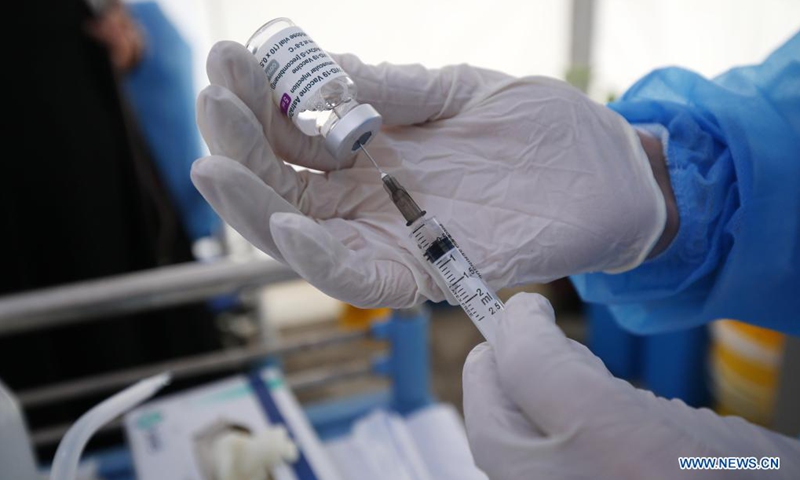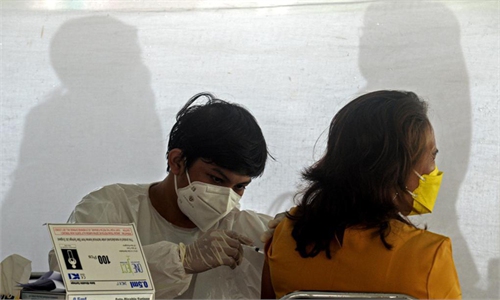Study sheds light on ‘long COVID’
One-fifth of asymptomatic patients suffer from condition

A medical worker prepares a dose of COVID-19 vaccine at a temporary vaccination station in Algiers, Algeria, June 6, 2021. Algeria began to set up temporary vaccination stations on Sunday to speed up vaccination against COVID-19 in the country. (Photo: Xinhua)
Almost a fifth of COVID-19 patients without symptoms went on to experience conditions consistent with long COVID a month after their initial diagnosis, according to a huge study published Tuesday.The analysis by non-profit FAIR Health encompassed insurance claims from 1.96 million Americans - the largest population of patients ever studied for long COVID - from February 2020 to February 2021.
"Even as the COVID-19 pandemic wanes, long-haul COVID persists as a public health issue affecting many Americans," said FAIR Health's president Robin Gelburd.
"The findings in our new study shed significant light on this emerging issue for all individuals who have long-haul COVID, as well as for policy-makers, providers, payors and researchers."
"Long COVID" refers to symptoms of the disease that persist more than four weeks after being diagnosed.
The study found that across all ages, the most common post viral conditions were in order of frequency: pain, breathing difficulties, high cholesterol, general discomfort and fatigue, and high blood pressure.
The odds of dying 30 days or more after initially being diagnosed with COVID-19 were 46 times higher for patients who were hospitalized with COVID-19 and discharged compared to those who weren't hospitalized.
Overall, 0.5 percent of COVID-19 patients who were hospitalized then discharged died 30 days or more after their initial diagnosis.
Nineteen percent of asymptomatic COVID-19 patients experienced long COVID symptoms 30 days out from their initial diagnosis; the figure grew to 27.5 percent of COVID-19 patients who were symptomatic but not hospitalized, and 50 percent of those who were hospitalized.
The order of most common long COVID conditions varied by age group - for example in the pediatric population, intestinal issues replaced high cholesterol as the third most frequent.
Most long COVID conditions were associated more with females than males - but some, such as cardiac inflammation, were more common in males.
AFP



